The influence of biogeochemical processes on the pH dynamics in... seasonally hypoxic saline Lake Grevelingen, The Netherlands
advertisement
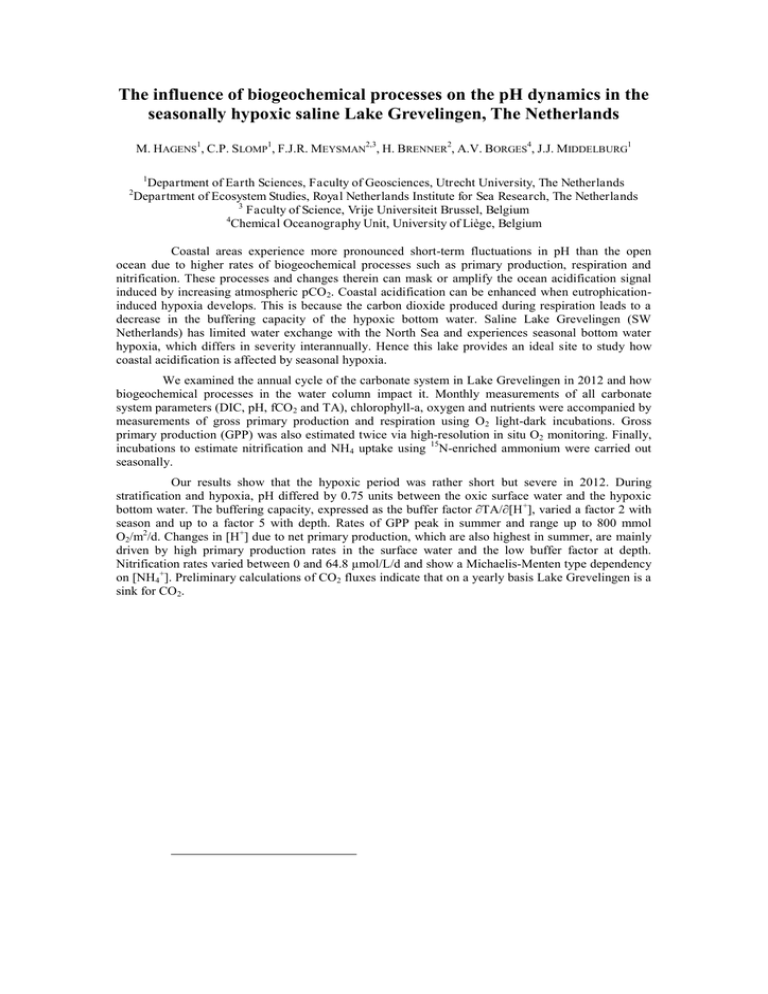
The influence of biogeochemical processes on the pH dynamics in the seasonally hypoxic saline Lake Grevelingen, The Netherlands M. HAGENS1, C.P. SLOMP1, F.J.R. MEYSMAN2,3, H. BRENNER2, A.V. BORGES4, J.J. MIDDELBURG1 1 Department of Earth Sciences, Faculty of Geosciences, Utrecht University, The Netherlands Department of Ecosystem Studies, Royal Netherlands Institute for Sea Research, The Netherlands 3 Faculty of Science, Vrije Universiteit Brussel, Belgium 4 Chemical Oceanography Unit, University of Liège, Belgium 2 Coastal areas experience more pronounced short-term fluctuations in pH than the open ocean due to higher rates of biogeochemical processes such as primary production, respiration and nitrification. These processes and changes therein can mask or amplify the ocean acidification signal induced by increasing atmospheric pCO 2. Coastal acidification can be enhanced when eutrophicationinduced hypoxia develops. This is because the carbon dioxide produced during respiration leads to a decrease in the buffering capacity of the hypoxic bottom water. Saline Lake Grevelingen (SW Netherlands) has limited water exchange with the North Sea and experiences seasonal bottom water hypoxia, which differs in severity interannually. Hence this lake provides an ideal site to study how coastal acidification is affected by seasonal hypoxia. We examined the annual cycle of the carbonate system in Lake Grevelingen in 2012 and how biogeochemical processes in the water column impact it. Monthly measurements of all carbonate system parameters (DIC, pH, fCO2 and TA), chlorophyll-a, oxygen and nutrients were accompanied by measurements of gross primary production and respiration using O2 light-dark incubations. Gross primary production (GPP) was also estimated twice via high-resolution in situ O2 monitoring. Finally, incubations to estimate nitrification and NH4 uptake using 15N-enriched ammonium were carried out seasonally. Our results show that the hypoxic period was rather short but severe in 2012. During stratification and hypoxia, pH differed by 0.75 units between the oxic surface water and the hypoxic bottom water. The buffering capacity, expressed as the buffer factor ∂TA/∂[H +], varied a factor 2 with season and up to a factor 5 with depth. Rates of GPP peak in summer and range up to 800 mmol O2/m2/d. Changes in [H+] due to net primary production, which are also highest in summer, are mainly driven by high primary production rates in the surface water and the low buffer factor at depth. Nitrification rates varied between 0 and 64.8 µmol/L/d and show a Michaelis-Menten type dependency on [NH4+]. Preliminary calculations of CO2 fluxes indicate that on a yearly basis Lake Grevelingen is a sink for CO2.


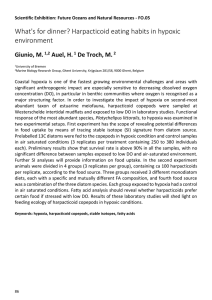



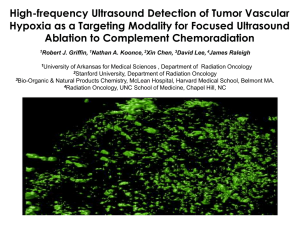
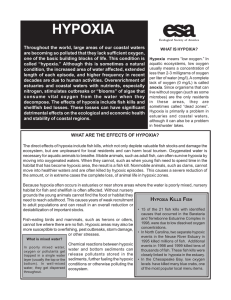
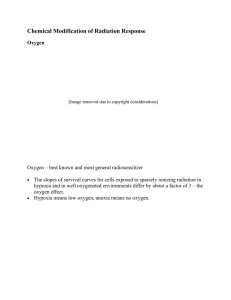
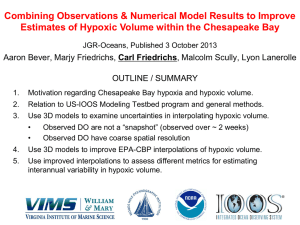
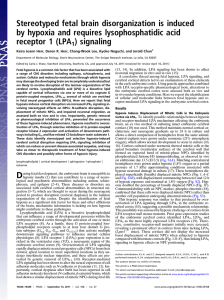
![The l[subscript 1]-l[subscript 2] regularization framework](http://s2.studylib.net/store/data/012625359_1-1550ff77beeff2e4e3beb6c3f27dd296-300x300.png)